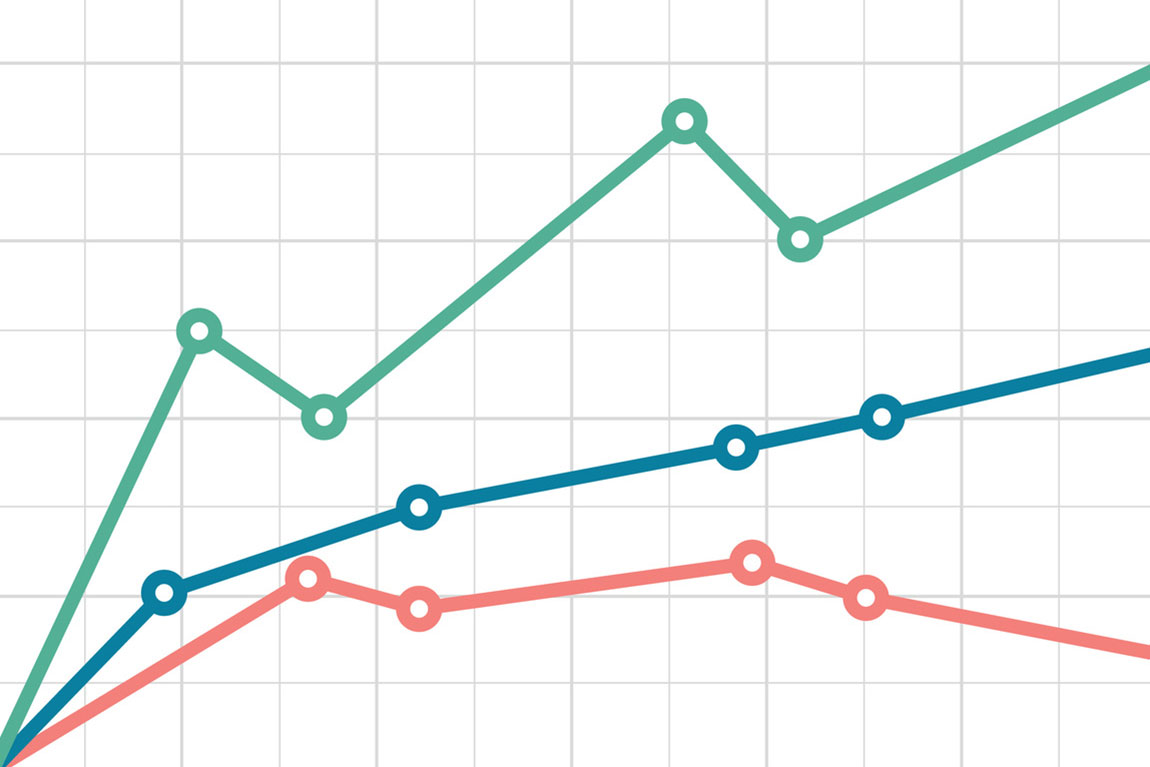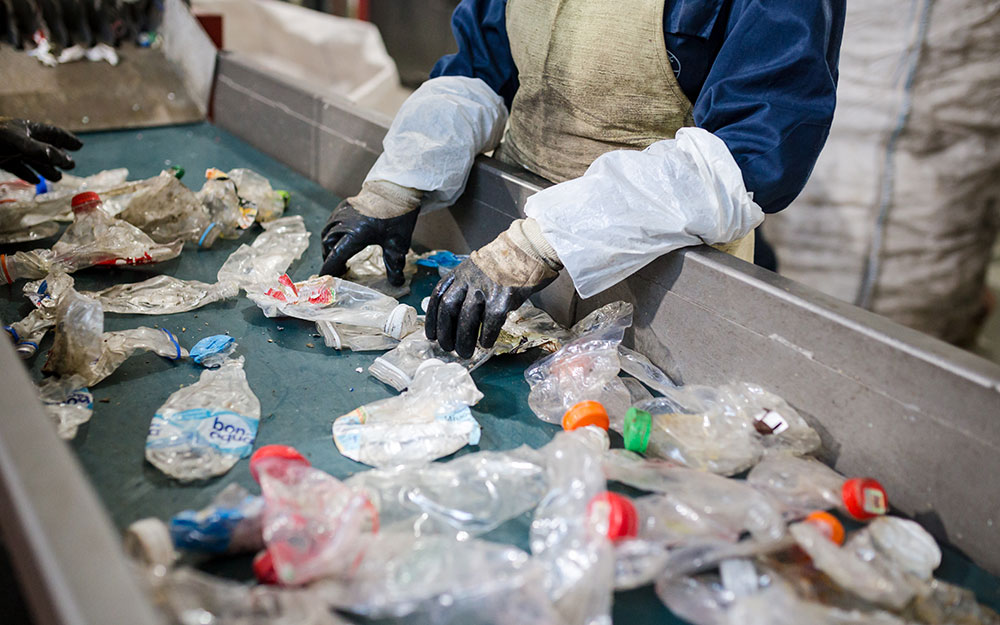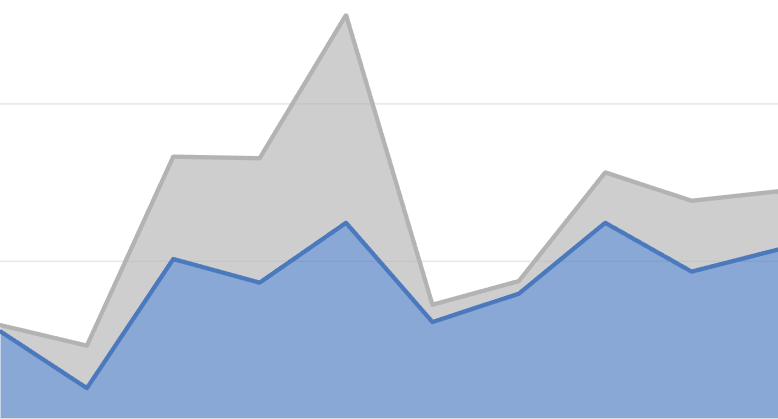Watch video
Overview
The unverified Q1 2024 recycling figures released by the Environment Agency indicate good performance in most materials.
The table below shows the forecast recycling evidence requirements for 2024. It also shows the carry-in tonnage reported earlier in the year from 2023. Carry-in is the number of PRNs produced in December 2023 that are issued for 2024 use.
This gives us a net forecast obligation for 2024. We can next see the Q1 unverified data for 2024. Overall Q1 is the third-best quarterly performance in the last five years, it is strong performing across all materials except glass remelt and aluminium. It has therefore caused some correction in PRN pricing across many materials whilst availability has in the main been maintained.
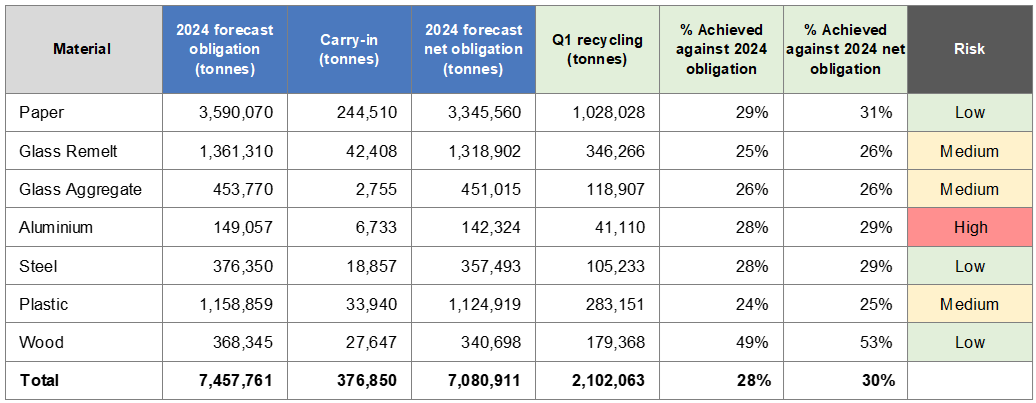
The unverified Q1 2024 data has benefited from the ongoing strong performance of the recycling industry, which started in Q4 2022. Looking forward, the industry now needs to continue to perform well throughout the year to produce enough PRNs in 2024. The challenge may come from any uplift in obligation as the amount of packaging placed on the market by producers becomes clearer.
Aluminium - high risk
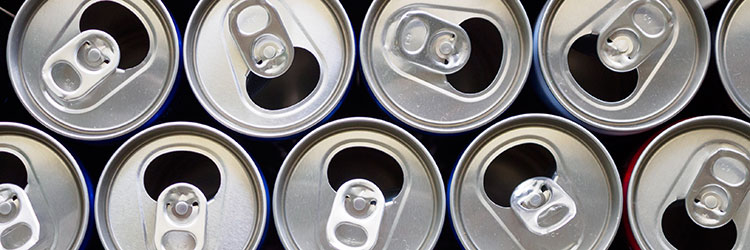
Aluminium has produced a poor performance with the third-worst quarter in the last five years. Based on these interim figures, performance needs to improve later in the year. Price increases for aluminium PRNs are inevitable but they come from a historically low base. Aluminium continues to be a packaging material of choice for consumers. In response, brand owners are switching away from plastic and glass into aluminium.
There is a risk that as more companies complete the registration of their obligation, the aluminium obligation will climb, adding to the need for greater levels of recycling in this material.
Plastic - medium risk
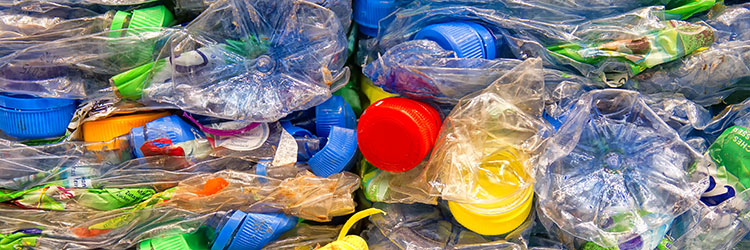
Plastic has produced a strong quarter, the fifth-best in the last five years. 2023 was the first year for a while that plastic met its in-year obligation and created a surplus, for carry-in. Across Q1 the price to support the level of PRN generation has been better than in recent years, which is positive. We will be watching the UK plastic obligation carefully to see if there is an increase in offsetting some of the gains made in better performance.
Glass aggregate - medium risk
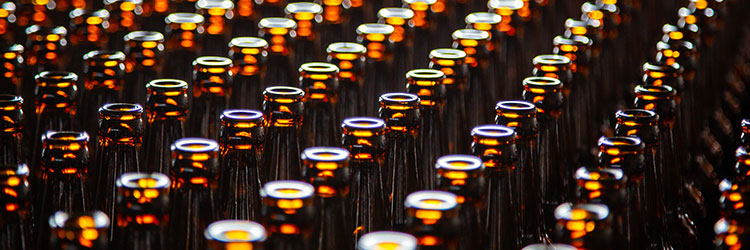
Overall, glass delivered a below-average performance, however, glass aggregate delivered the second-best Q1 performance seen in the last five years. This goes against the recent trend driven by reduced demand for the material since Q3 2022. This uplift in performance is welcome and it will be interesting to see if this continues throughout the year, or is a short-lived bubble.
Glass remelt - medium risk
Glass recycling volumes in Q1 were poor, delivering a lower-than-average performance compared to the last five years. The glass obligation will be keenly watched next month to see if this slowdown in recycling presents an issue for compliance in 2024.
Prices have increased and availability seems to be improving since the publication of this data, however, it is too soon to predict the overall expectations for the year without the UK obligation and further recycling data.
Paper - low risk
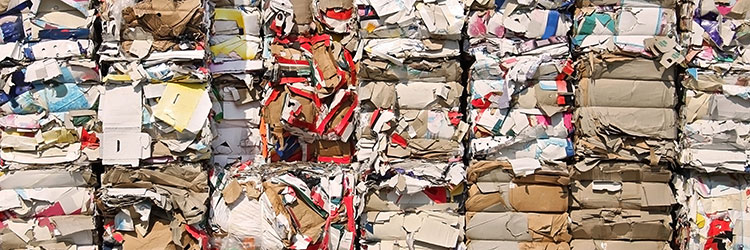
Paper delivered a strong Q1, delivering the best-performing quarter in the last five years. This remains above market sentiment and consequently the PRN price has remained low and softened slightly. However, overall market trends remain unchanged, with OCC prices falling and demand for post-consumer packaging decreasing due to an overall drop in consumer spending.
Steel - low risk
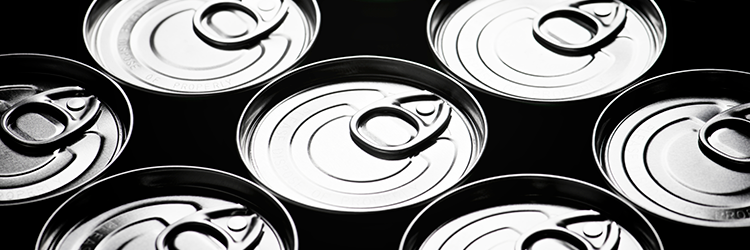
Steel volumes in Q1 are broadly average compared to the last five years, however, this is not a material of concern this year. Steel is a declining packaging material, and we therefore can envisage a reduction in obligation in 2024. PRN prices have continued to be flat in light of the Q1 figures.
Wood - low risk
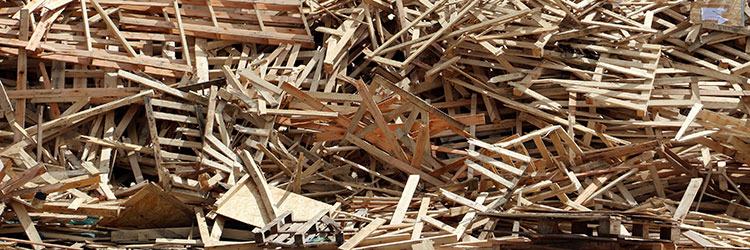
Wood has delivered an average performance compared to the last five years. Historically, it has normally achieved its recycling target around Q3. Although wood was one of the few recycling targets to increase in 2024, it is not likely to cause any risk to compliance. The PRN price will track against the paper PRN prices as both materials will be used to meet general recycling.
Looking ahead
Ecosurety will continue to communicate the changes in the PRN market throughout the year. The Q1 2024 data is positive overall, with many PRN prices softening as a result.
The initial obligation data due to be published next month in May will add further details to how we expect the 2024 PRN market to play out. With the UK economy in and out of recession in 2023, it looks likely that obligation will be flat.
You can access the PRN market tracker that provides a daily update on market pricing trends and performance by clicking here.
Contact us for more information
If you have any questions, please contact your account manager.

Nigel Ransom
Head of Procurement
As Head of Procurement Nigel and his team are responsible for buying PRNs for all Ecosurety's scheme members. He undertakes market research and data analysis and makes informed decisions for the benefit of Ecosurety members.
